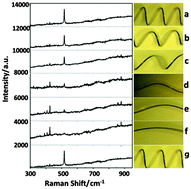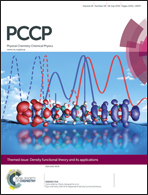The superelastic mechanism of Si3N4 microsprings using micro-Raman spectroscopy
Abstract
Silicon nitride microsprings with superelasticity are characterized using SEM, XRD, TEM and micro-Raman methods. The internal structure and the superelastic mechanism of silicon nitride microsprings are proposed through analyzing the variation of Raman peaks upon stretching gradually. During the stretching process, since all the vibrations are internal vibrations within the primitive unit cell, the basic structure has no changes and the residual stress never concentrates. The special structure of the fine grains and no sharp grain boundaries make the silicon nitride microsprings possess such good superelastic properties.


 Please wait while we load your content...
Please wait while we load your content...